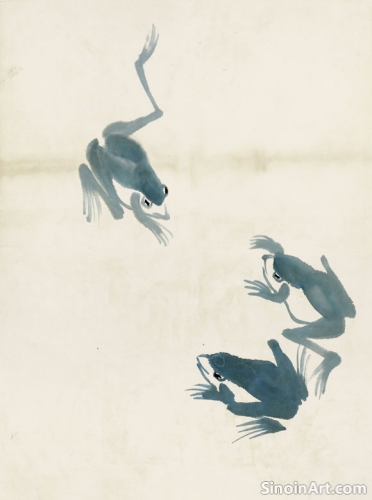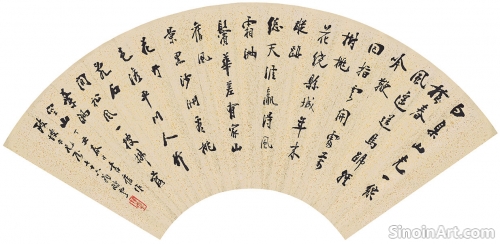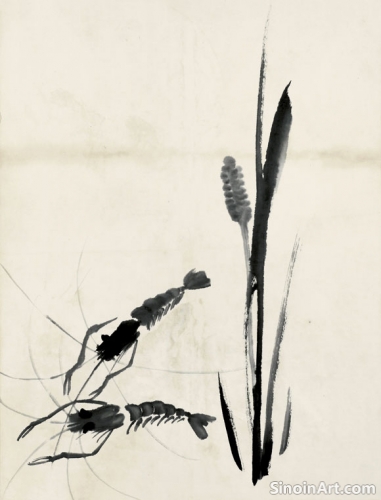Xieyi Flowers and Birds: Expressing Life’s Vitality
|
The depiction of flowers and birds (花鸟画, huaniao hua) is another important theme in Xieyi painting, serving as a way to express life's vitality and beauty. Artists seek not just to portray the outward appearance of these subjects, but also to convey their inherent energy and spirit.  In Xieyi flower and bird paintings, the artist uses bold and spontaneous brushstrokes to capture the essence of each subject. A single stroke might represent a petal or the wing of a bird. The use of ink and color washes allows for the creation of delicate textures, as well as dramatic contrasts.  Xieyi artists often depict flowers and birds in motion, emphasizing their vitality and inherent energy. The brushstrokes may suggest the gentle sway of a branch, the flight of a bird, or the opening of a blossom. This focus on movement adds to the dynamism of the painting.  The relationship between flowers and birds in Xieyi paintings often creates a sense of harmony and balance. Artists aim to evoke not only the individual beauty of these subjects but also their interconnectedness within the natural world. They express the symbiotic relation of life through their art. Through their expressive brushwork, Xieyi artists infuse their flower and bird paintings with a sense of vitality, creating works that are both visually captivating and emotionally resonant. These paintings invite viewers to appreciate the delicate beauty and inherent energy of nature. |
Tag : Xieyi Flowers and Birds, Chinese Literati Bird Painting, Expressive Flower Painting, Ink Wash Bird Art, Vitality in Xieyi Painting
Related information
- Xieyi Painting and the Concept of "Ziran"
- The "Three Perfections" in Xieyi
- Xieyi Painting and the Use of "Leaving the Brush"
- The Concept of "Zhong Feng" in Xieyi Brushwork
- The Brushstrokes of Xieyi: Mastering Spontaneity
"Ziran" (naturalness) is a cornerstone of Xieyi painting, emphasizing effortless ease, rejection of artificiality, and a profound connection with the natural world, requiring an understanding of materials and authenticity in personal expression, allowing the art process to unfold organically.
The "Three Perfections" (sānjué) – poetry, calligraphy, and painting – represent the holistic literati ideal, emphasizing the integration of these three art forms as a complete expression of the artist's personal feeling, thought, and their connection to tradition, with calligraphy’s influence often seen in Xieyi’s brushwork.
"Leaving the Brush" (cángfēng) in Xieyi involves concealing the brush tip when beginning and ending a stroke, creating lines with a subtle beginning and end, conveying inner strength, control, and intentionality, contrasting with the technique of "revealing the brush," and demonstrating the mastery of brush control.
"Zhong Feng" (central tip) is a core Xieyi technique involving holding the brush perpendicular to the paper to create strong, balanced lines with even width, conveying inner strength and control, serving as a foundation for advanced brushwork, and requiring a mastery of precision and consistent brush handling.
This article delves into the various brushstrokes and techniques used in Xieyi painting, emphasizing the importance of mastering spontaneity and ink control to convey the spirit of the subject.